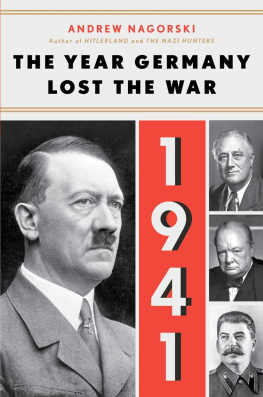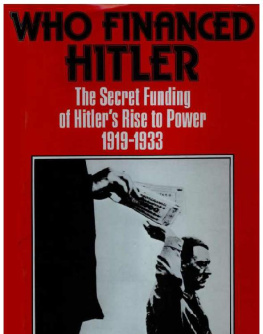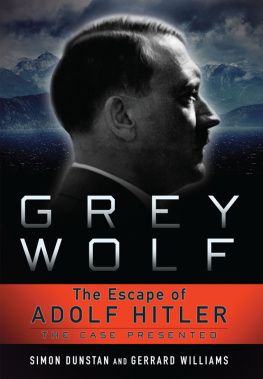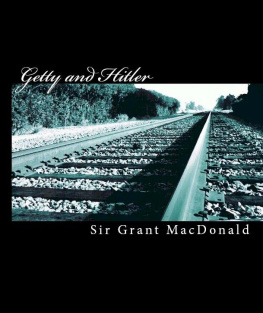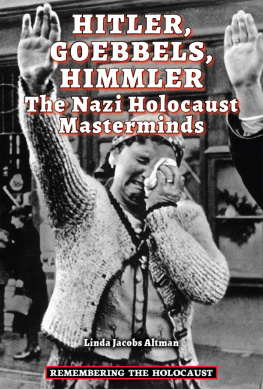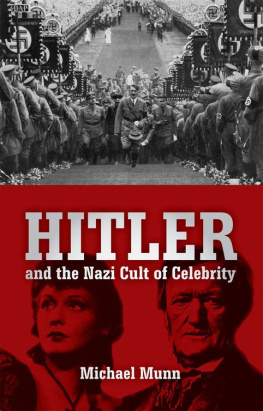Hitlers Plans for Global Domination
HITLERS PLANS FOR
GLOBAL DOMINATION
Nazi Architecture and Ultimate War Aims
Jochen Thies
Translated by
Ian Cooke and Mary-Beth Friedrich

|
|---|
Published by
Berghahn Books
www.berghahnbooks.com |
English language edition
2012, 2014 Berghahn Books | German language edition
1976 Droste Verlag |
First paperback edition published in 2014
Originally published as
Architekt der Weltherrschaft. Die Endziele Hitlers
By Jochen Thies |
All rights reserved. Except for the quotation of short passages for the purposes of criticism and review, no part of this book may be reproduced in any form or by any means, electronic or mechanical, including photocopying, recording, or any information storage and retrieval system now known or to be invented, without written permission of the publisher.
Library of Congress Cataloging-in-Publication Data
Thies, Jochen, 1944
[Architekt der Weltherrschaft. English]
Hitlers plans for global domination : Nazi architecture and ultimate war aims /
Jochen Thies ; translated by Ian Cooke and Mary-Beth Friedrich.
p. cm.
Includes bibliographical references and index.
ISBN 978-0-85745-462-1 (hardback) ISBN 978-1-78238-463-2 (paperback)
ISBN 978-0-85745-463-8 (ebook)
1. Hitler, Adolf, 18891945. 2. Heads of stateGermanyBiography.
3. GermanyForeign relations19331945. I. Title.
DD247.H5T48613 2012
943.086092dc23
[B]
2011040773
British Library Cataloguing in Publication Data
A catalogue record for this book is available from the British Library
Printed on acid-free paper.
ISBN 978-0-85745-462-1 hardback
ISBN 978-1-78238-463-2 paperback
ISBN 978-0-85745-463-8 ebook
In memory of my friends
Jonathan Carr
Christopher Cviic
Harry Weinberger
CONTENTS
Volker Berghahn
Figures follow .
ABBREVIATIONS
|
|---|
ADAP | Akten zur Deutschen Auswrtigen Politik |
AHR | American Historical Review |
BA | Bundesarchiv Koblenz |
BA/MA | Bundesarchiv-Militrarchiv Freiburg i.Br. |
CEH | Central European History |
FS | Festschrift |
GWU | Geschichte in Wissenschaft und Unterricht |
HZ | Historische Zeitschrift |
IfZ | Institut fr Zeitgeschichte Mnchen |
JCH | Journal of Contemporary History |
JMH | Journal of Modern History |
IMT | Internationaler Militrgerichtshof |
KTB | Kriegstagebuch Halder |
MBB | Messerschmitt-Blkow-Blohm |
MfT | Mitteilungen fr die Truppe |
MGM | Militrgeschichtliche Mitteilungen |
MR | Marine-Rundschau |
NPL | Neue Politische Literatur |
Ortenau | Verffentlichungen des Historischen Vereins fr Mittelbaden |
PA AA | Politisches Archiv Auswrtiges Amt |
PRO | Public Record Office London |
PVS | Politische Vierteljahreszeitschrift |
RGBl | Reichsgesetzblatt |
Slg | Sammlung |
Tb | Tagebuch |
VfZG | Vierteljahreshefte fr Zeitgeschichte |
WWR | Wehrwissenschaftliche Rundschau |
FOREWORD
The last two decades have seen yet another noticeable upsurge in the academic study ofand public interest inthe Hitler dictatorship and German society under National Socialism. The old question of how the Germans got into the Third Reich has received renewed attention in works on the Weimar Republic, attention that has been further expanded by research on the continuities and discontinuities in modern German history from Bismarck to Hitler.
As far as the Nazi period in the strict sense is concerned, research has focused both on how the country ticked in the 1930s at the grassroots level and, above all, on the sociopolitical history of World War II with its 70 million dead and its mass murder of Europes Jews and other minorities. To some extent, the topics of military violence and genocide received a considerable boost after the 1995 publication of Daniel Goldhagens Hitlers Willing Executioners, which identified the murderous depths of German anti-Semitism as being a root cause of the Holocaust. This bestseller asserted that when the Nazi regime provided the ideological justifications and administrative structures that permitted genocide, a preexisting eliminationist hatred of the Jews in Germany flipped over into an exterminationist racism. It was these prewar forces and wartime conditions that, according to Goldhagen, mobilized not only a relatively small number of fanatics through the SS, but also ordinary German men through the Wehrmacht and police units sent into the occupied Eastern territories to kill.
Following Christopher Browning and others, Goldhagen rightly drew attention once again not just to the cold-blooded industrial mass murder at Auschwitz and other extermination camps, but also to the Holocaust in the villages of the East, where soldiers and policemen, often under the No less significant than the Goldhagen Debate is the wave of fresh, meticulous research now available on the subject of the murder of Europes Jews, Sinti and Roma, Slavs, and others.
Much of this workwhich, again, can be mentioned only selectively hereis concentrated on retrieving the fate and the responses of the victims from the records.
This research has in turn revived an interest in the role of the Wehr-macht, although without focusing on the alleged Lost Victories or the strategic and tactical blunders that the German generals and fieldmarshals laid at Hitlers door after 1945.picture of the SS and the Wehrmachts Weltanschauungskrieg, which the regime began first in Poland, then later conducted in the Balkans and the Soviet Union, as well as in occupied Western Europe.
However valuable all this work has been for understanding the larger dynamics of the Third Reich and the causes of its ultimate defeat by the Alliesas well as its self-defeat through its inner contradictions and irrationalities, even in the face of impending collapseone key question is not addressed in much of this recent literature, whether the literature provides sweeping analyses of Hitlers Empire or the Nazi Empire or whether it is narrowly monographic. This is the question of the ideas and policies the Nazis conceived of for the world after Operation Barbarossa, the invasion of the Soviet Union in June 1941.
Of course, it could be argued that the study of post-Barbarossa planning is counterfactual and hence irrelevant. After all, Hitler never defeated the Soviet Union, and he himself was soon defeated, first in the East by the Red Army and later in Western Europe. But there is something special about this particular counterfactual, in that the Wehrmacht came very close to defeating Stalin in the summer and early autumn of 1941. Indeed, the regime was at that time so confident that the war in the East would be won as quickly as the earlier campaigns in Western and Northern Europe that Hitlers headquarters began preparations to reduce the mass mobilization that it had accomplished in the spring 1941. At the same time, the planning for the world post-Barbarossa that had begun as far back as 193738 continued, accompanied by expert discussions about how to establish a New Order in the vast spaces of a defeated Soviet Union and the rest of conquered Europe,
Next page

